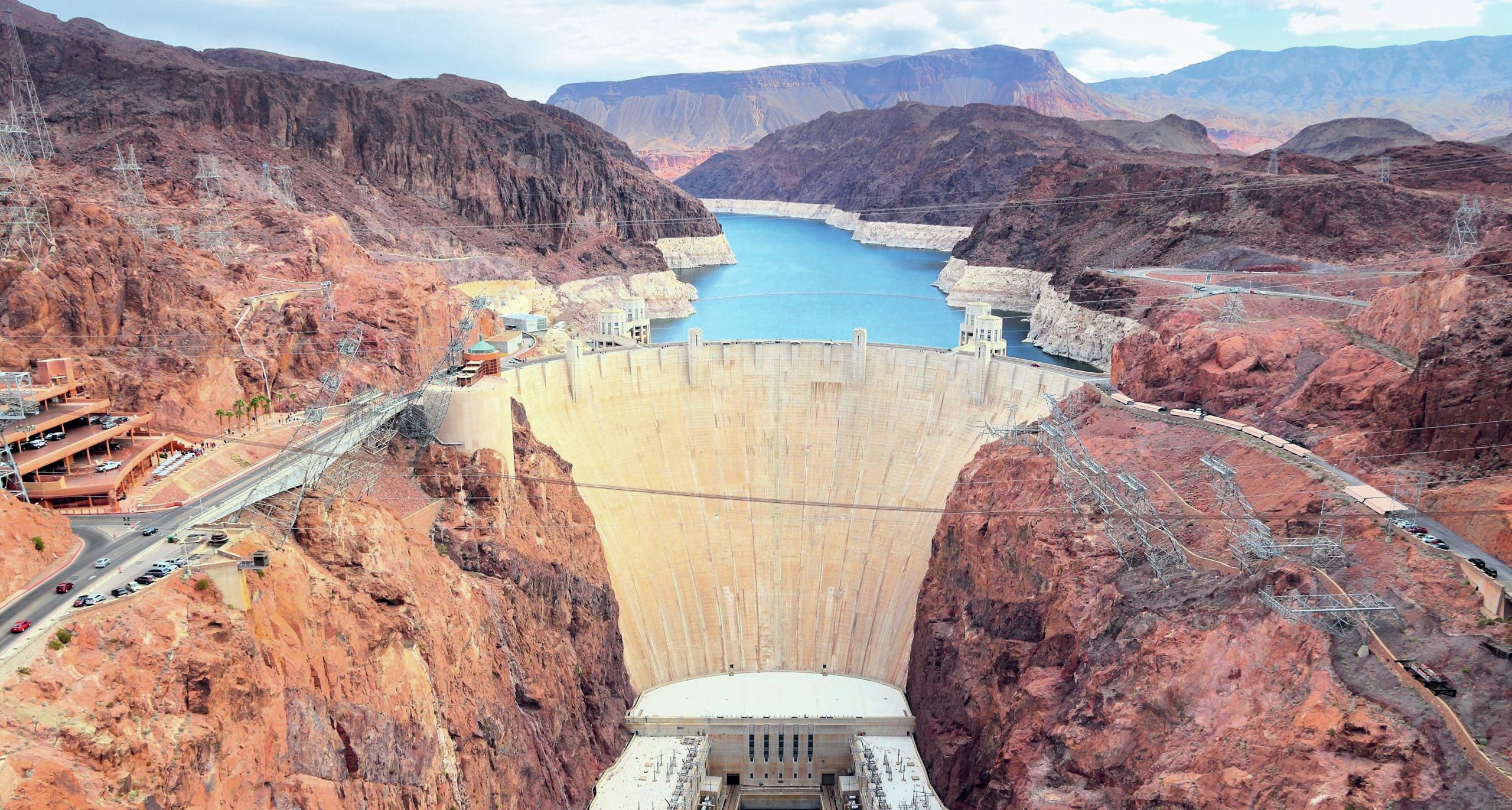
The Hoover Dam was the largest construction of its kind when it was completed in 1935, standing more than 200m tall and nearly 400m across. The dam in the Colorado River was intended to serve three purposes: control periodic flooding by creating a large reservoir (Lake Mead), provide a secure water supply for irrigation and to generate electricity. The legislation to authorise construction passed in 1928 and the contract was signed with construction companies in 1931.
There was no shortage of men wanting to work on the dam. The Wall Street crash of late 1929 ushered in the Great Depression and put millions of people out of work. A new city – Boulder City, Nevada – emerged to house the more than 20,000 men working on the dam. They worked rapidly, and the dam was completed more than a year ahead of schedule in 1935. Since it stood as testament to the ability of the USA to complete important infrastructure projects as part of the New Deal (a programme of government reforms designed to achieve economic relief), President Roosevelt personally dedicated the dam on 30 September 1935. Numerous other dams were constructed during the 1930s – the most important of which were part of the Tennessee Valley Authority that brought electricity to the deep South.
Your organisation does not have access to this article.
Sign up today to give your students the edge they need to achieve their best grades with subject expertise
Subscribe



